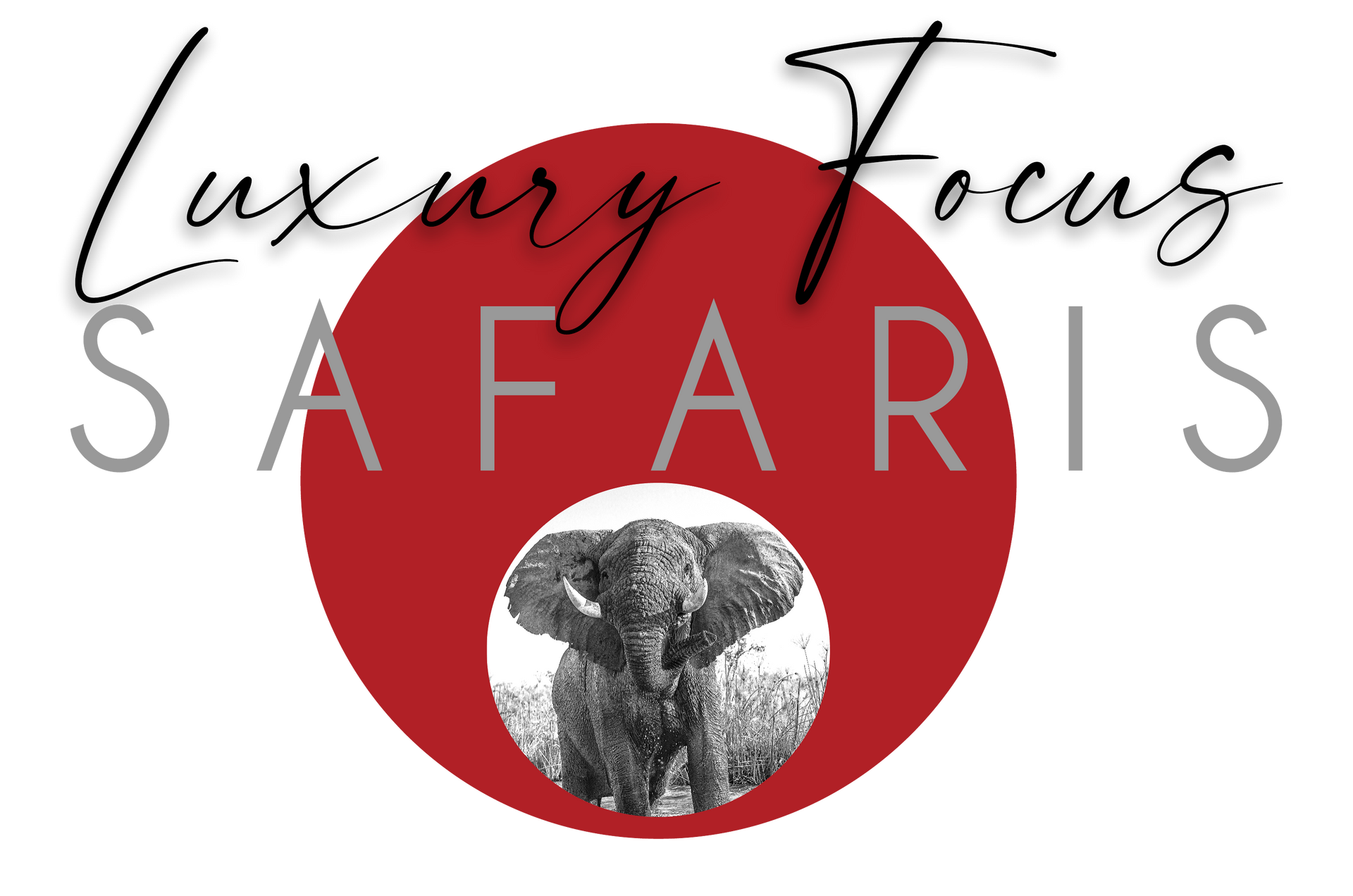Tanzania
Tanzania
Tanzania
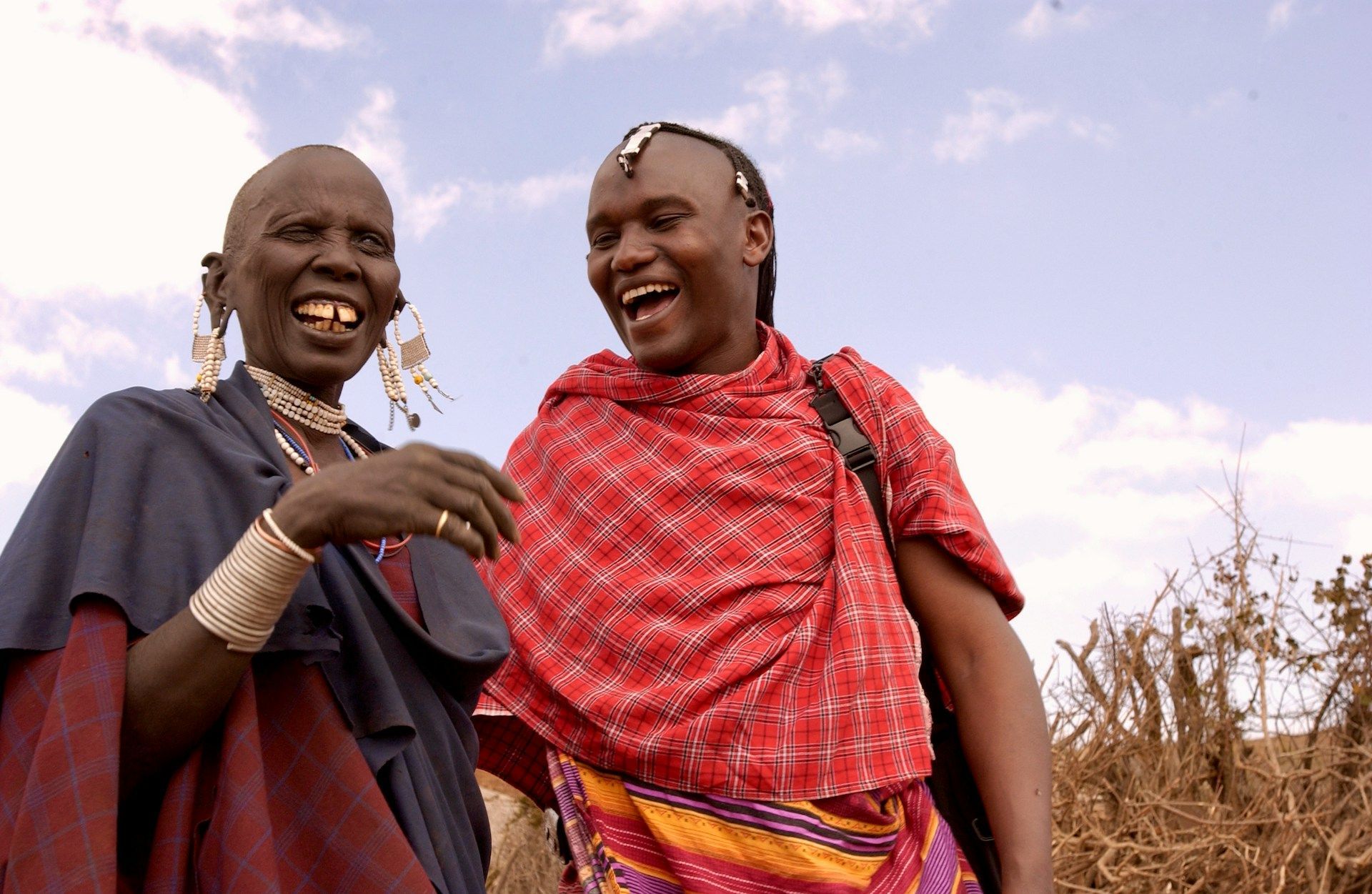
Slide title
Write your caption hereButton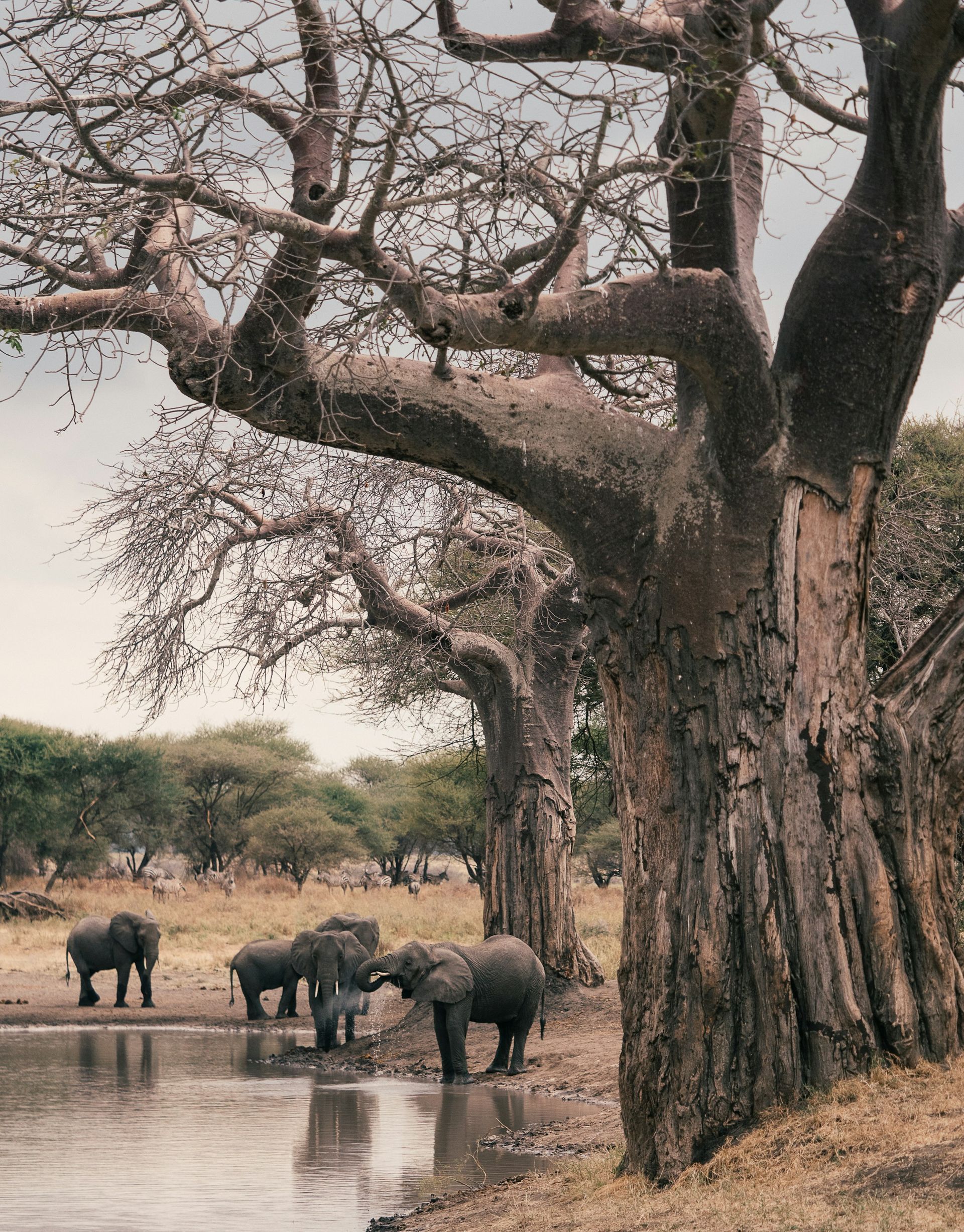
Slide title
Write your caption hereButton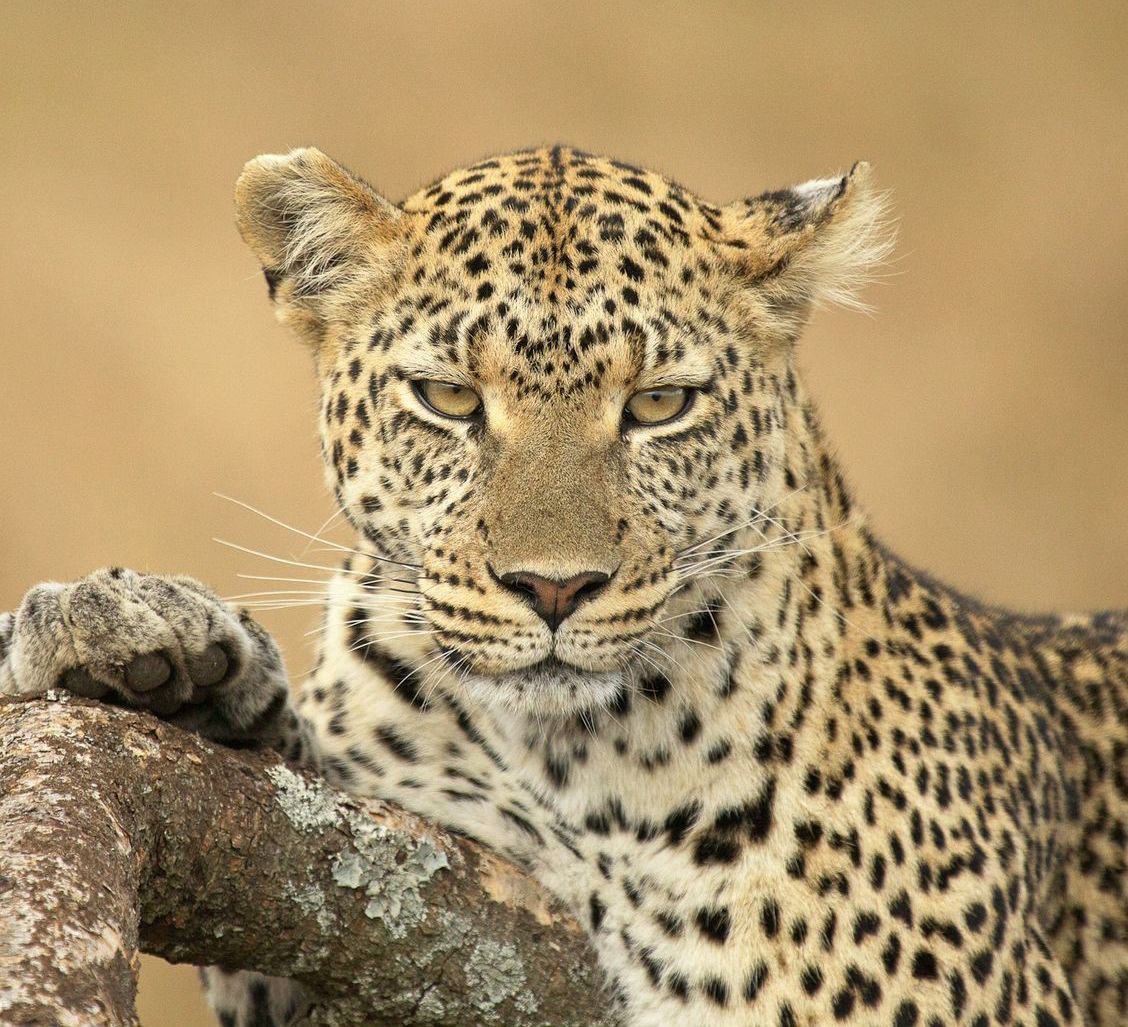
Slide title
Write your caption hereButton
Where Kilimanjaro
BECKONS
Famed for its panoramic landscapes, vast, sweeping savannahs, spectacular sunsets and Africa's tallest mountain (and perhaps its most iconic), Tanzania is without a doubt one of the most naturally beautiful countries on the continent.
This is the home of Kilimanjaro - a huge, sleeping volcano with a snowcapped peak that has become synonymous with Africa. It attracts climbers from all over the world who want to stand on the "roof of Africa". At 19,341 feet high it's an epic climb. It's also the highest free-standing mountain in the world!
Tanzania is also renowned for the Serengeti National Park, part of a massive 11,500 square mile eco-system that includes the Masai Mara in neighbouring Kenya that's home to the Great Wildebeest Migration. The Serengeti is named for the Masai word "siringet" which loosely translated means "where the land runs on forever". It's a fitting name for the endless horizons of this most special place.
Other legendary safari destinations in Tanzania include the jaw-dropping Ngorongoro Crater - a self-contained eco-system surrounded by the towering walls of an extinct volcanic caldera; Tarangire National Park with its incredible diversity of wildlife and amazing baobab trees and Nyerere National Park - formerly known as the Selous - one of the largest national parks in Africa.
Where Kilimanjaro
BECKONS
Famed for its panoramic landscapes, vast, sweeping savannahs, spectacular sunsets and Africa's tallest mountain (and perhaps its most iconic), Tanzania is without a doubt one of the most naturally beautiful countries on the continent.
This is the home of Kilimanjaro - a huge, sleeping volcano with a snowcapped peak that has become synonymous with Africa. It attracts climbers from all over the world who want to stand on the "roof of Africa". At 19,341 feet high it's an epic climb. It's also the highest free-standing mountain in the world!
Tanzania is also renowned for the Serengeti National Park, part of a massive 11,500 square mile eco-system that includes the Masai Mara in neighbouring Kenya that's home to the Great Wildebeest Migration. The Serengeti is named for the Masai word "siringet" which loosely translated means "where the land runs on forever". It's a fitting name for the endless horizons of this most special place.
Other legendary safari destinations in Tanzania include the jaw-dropping Ngorongoro Crater - a self-contained eco-system surrounded by the towering walls of an extinct volcanic caldera; Tarangire National Park with its incredible diversity of wildlife and amazing baobab trees and Nyerere National Park - formerly known as the Selous - one of the largest national parks in Africa.

Slide title
Write your caption hereButton
Slide title
Write your caption hereButton
Slide title
Write your caption hereButton
TANZANIA'S HOTSPOTS
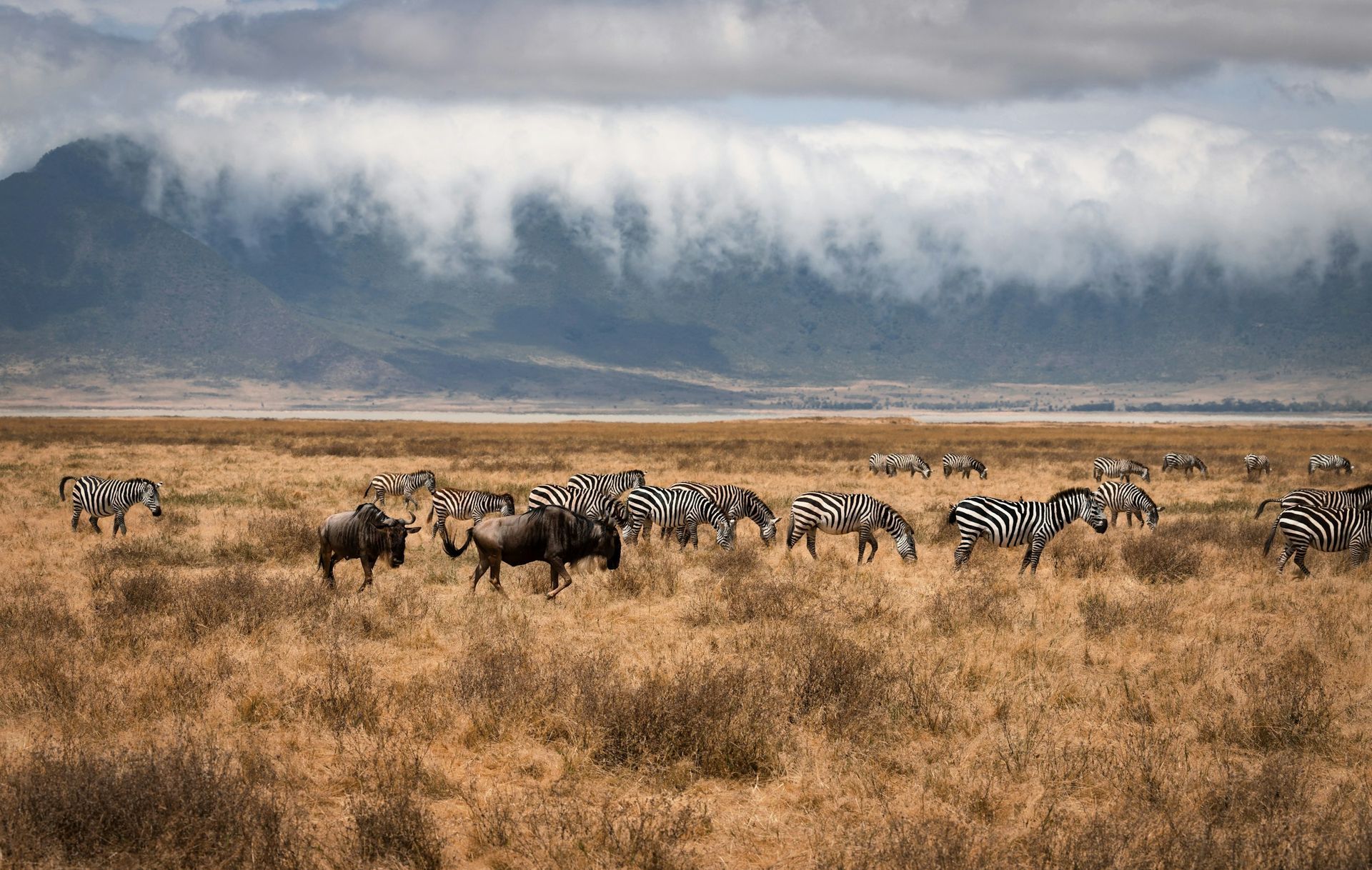
Ngorongoro Crater
Its name rolls off the tongue and it's simply stunning to behold... - Ngorongoro (pronounced "ungoro-goro") is the world's largest intact volcanic caldera (crater) - the remains of the 3-million year-old volcano that would have dwarfed Kilimanjaro had it not erupted and collapsed!
The crater itself is part of the Ngorongoro Conservation Area that's a UNESCO World Heritage Site. Its vegetation ranges from montane forest to grassland and is densely populated with wildlife. This is where you'll find a rich diversity of life, from the vast flocks of lesser flamingo that make Lake Magadi on the crater bed their home to considerable herds of plains game, from wildebeest and buffalo to zebra and eland.
You'll also find lion, leopard and hyena here in good numbers, as well as elephant and black rhino. There are no giraffe inside the crater as the sides are too steep for them to manage. But there are plenty around the crater's edges.
The Ngorongoro Conservation Area is one of the most important prehistoric sites in the world and is home to Olduvai Gorge where some of the earliest hominid remains yet found were discovered in the 1950s, shedding light on our understanding of evolution.
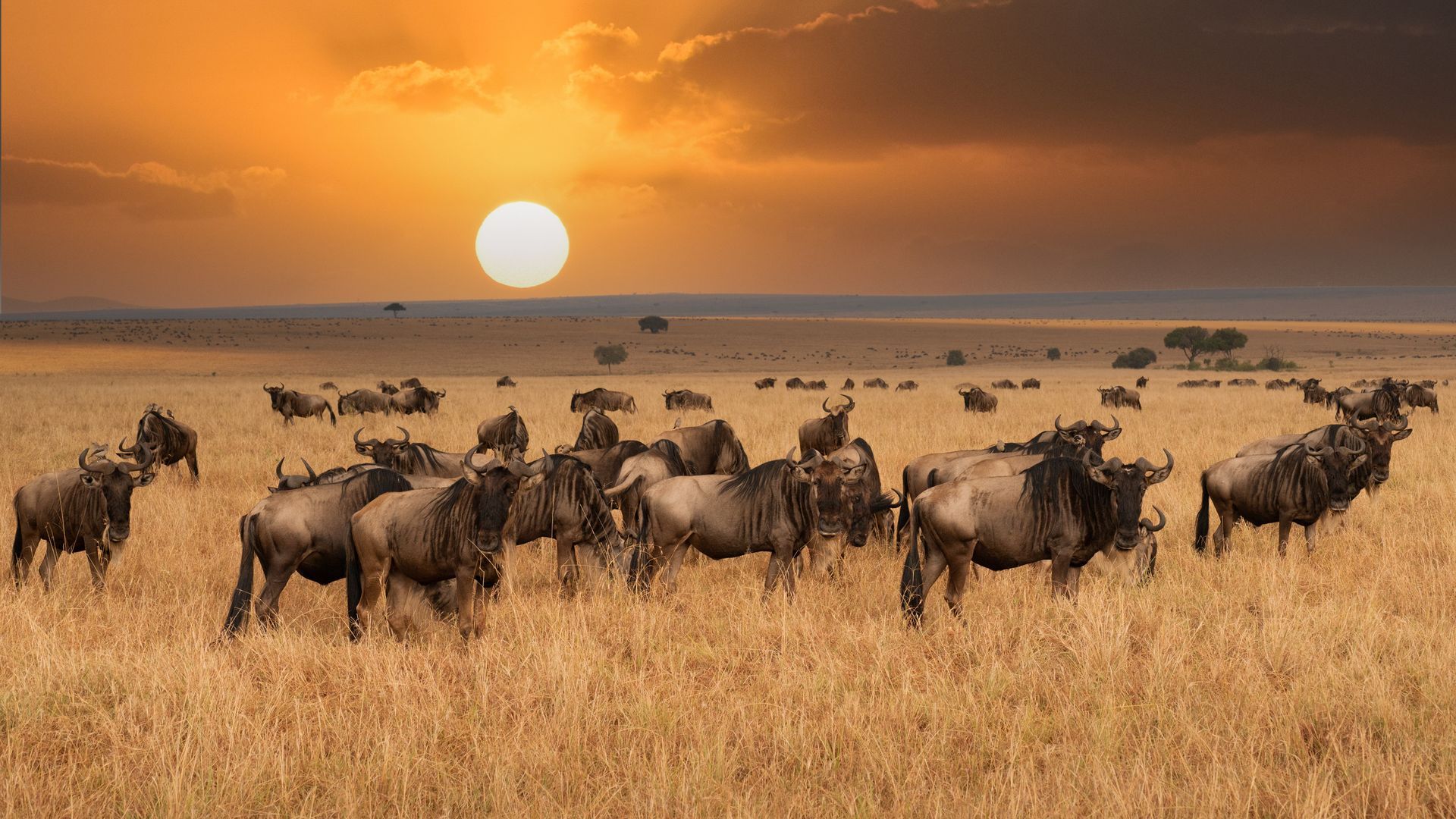
The Serengeti
Located in the north-west of Tanzania with its northern reaches forming the national border with neighbouring Kenya, the Serengeti is the country's oldest national park and without a doubt its most famous.
It covers a vast 14,750 square miles of grassy plains, open savannah, riparian forest and acacia woodland. In the south, the plains are virtually treeless. This is where the wildebeest breed, staying in the plains from December to May each year before moving slowly north on their annual migration, crossing the snaking Mara River several times as they move into the Masai Mara.
January and February are the best time to see newborns. It's a great time of year for birding as well. From June to July each year the wildebeest are in the western corridor, moving north from August to September. During the rainy season the plains are also home to large numbers of zebra, impala, hartebeest, topi, buffalo and waterbuck.
The Serengeti is good for game viewing all year-round and offers some of the most spectacular sightings in East Africa, making it an absolute "must" for your East African safari itinerary.
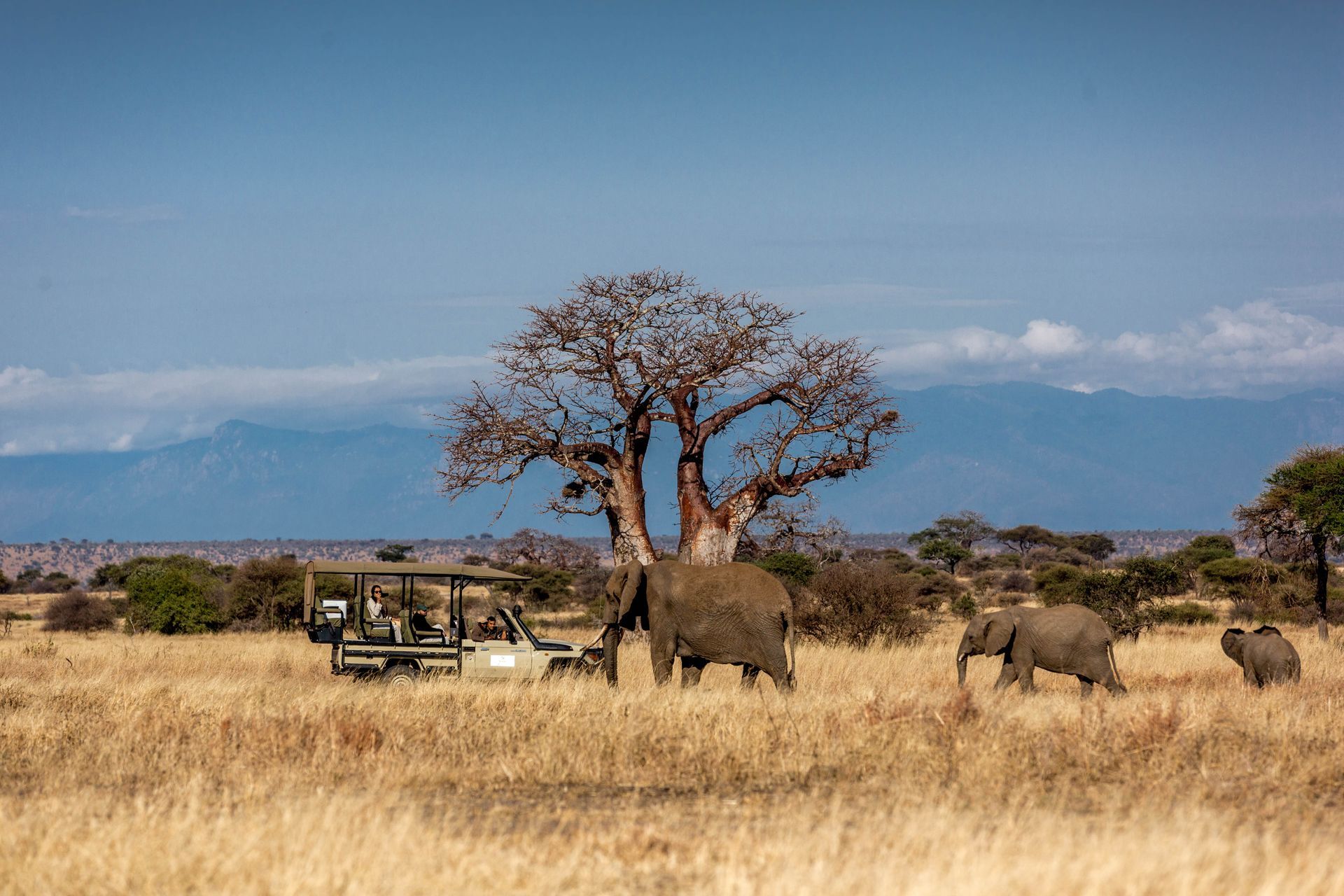
Tarangire National Park
If you want to see more animals and fewer tourists, then Tanzania's Tarangire National Park is the place to go.
This lesser-known game reserve rivals the Serengeti with its concentrations of wildlife and it's also an incredible birding destination with more than 500 species recorded.
Dissected by the perennial Tarangire River, during the dry season you will often see herds of hundreds of elephants here as the river provides the only source of permanent water in the area.
Tarangire's geography is marked by high numbers of ancient baobab trees, as well as marshes which become grassy plains during the dry season, attracting high numbers of buffalo, antelope and other plains game. You frequently see lion, leopard and cheetah here too.
"Special" sightings include Bohor's reedbuck, Coke's hartebeest, gerenuk and Beisa oryx, as well as black rhino.
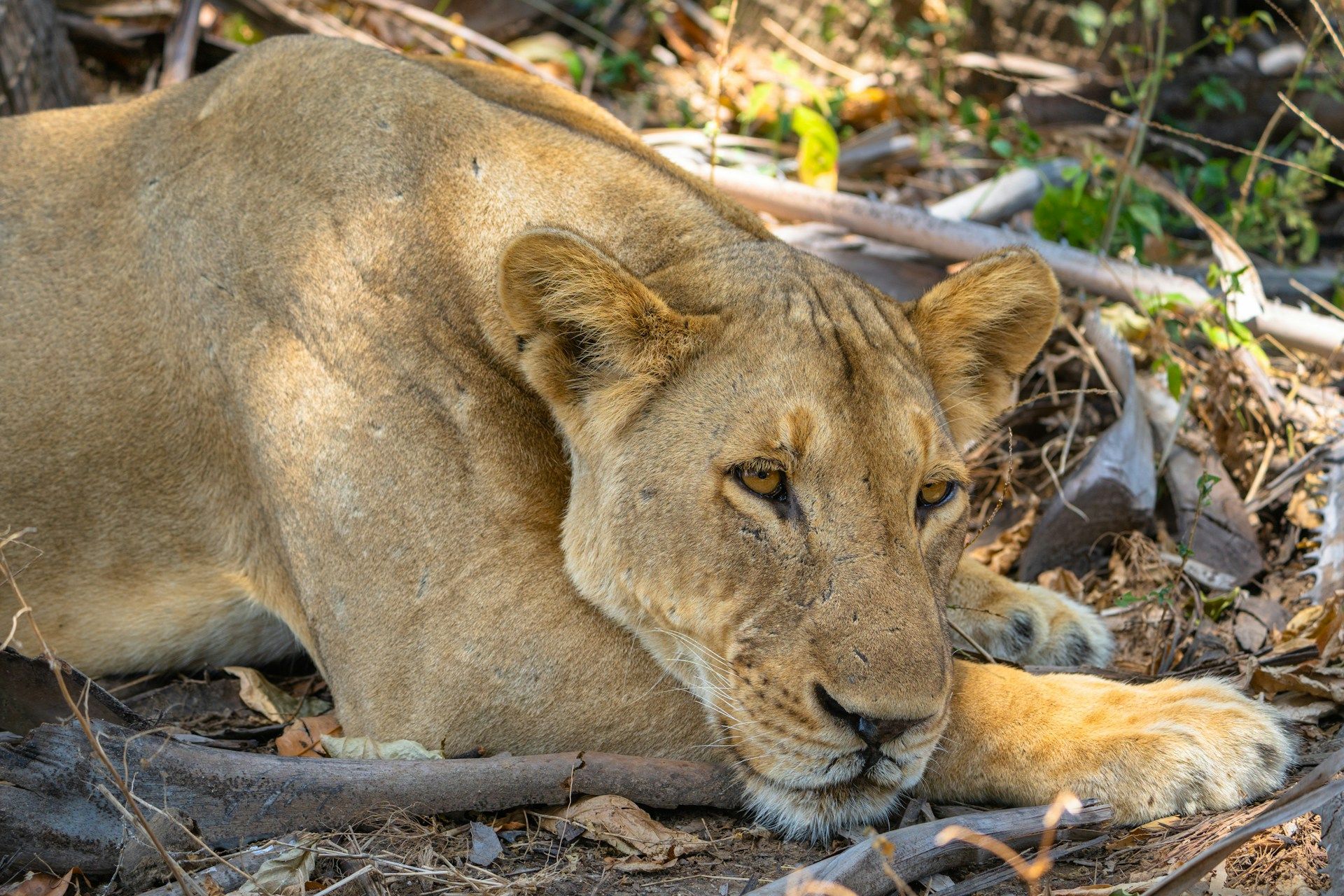
Nyerere National Park
Nyerere National Park was formerly known as the Selous and this incredible reserve in the south of Tanzania is bigger than Switzerland! Remote, wild and fabulously untamed, this UNESCO World Heritage Site is without a doubt one of the best places to visit in Tanzania. It covers more than 19,300 square miles of sprawling miombo woodland, wetlands and the beautiful Rufiji River which runs through it like a glittering jewelled snake.
This national park has a higher density and diversity of species than any other miombo woodland area in Africa and is an important home for the critically endangered painted wolf (African wild dog), which shares the reserve with plenty of crocodile, lion, leopard, hippo, elephant, black rhino, buffalo and more than 400 bird species.
The perennial Rufiji River flows to Indian Ocean and is renowned for its hippo and crocodile populations. Visitors can enjoy cruising the river on boat-based safari activities, offering exceptional wildlife viewing along the way.
Nyerere National Park is rich in wildlife, from major predators such as lion and leopard, as well as big herds of buffalo and elephant roaming the woodlands. Among the rarer animals, you might spot black rhino, Nyasa wildebeest, sable antelope, eland and Lichtenstein’s hartebeest.
TANZANIA'S HOTSPOTS
Ngorongoro Crater
Its name rolls off the tongue and it's simply stunning to behold... - Ngorongoro (pronounced "ungoro-goro") is the world's largest intact volcanic caldera (crater) - the remains of the 3-million year-old volcano that would have dwarfed Kilimanjaro had it not erupted and collapsed!
The crater itself is part of the Ngorongoro Conservation Area that's a UNESCO World Heritage Site. Its vegetation ranges from montane forest to grassland and is densely populated with wildlife. This is where you'll find a rich diversity of life, from the vast flocks of lesser flamingo that make Lake Magadi on the crater bed their home to considerable herds of plains game, from wildebeest and buffalo to zebra and eland.
You'll also find lion, leopard and hyena here in good numbers, as well as elephant and black rhino. There are no giraffe inside the crater as the sides are too steep for them to manage. But there are plenty around the crater's edges.
The Ngorongoro Conservation Area is one of the most important prehistoric sites in the world and is home to Olduvai Gorge where some of the earliest hominid remains yet found were discovered in the 1950s, shedding light on our understanding of evolution.
The Serengeti
Located in the north-west of Tanzania with its northern reaches forming the national border with neighbouring Kenya, the Serengeti is the country's oldest national park and without a doubt its most famous.
It covers a vast 14,750 square miles of grassy plains, open savannah, riparian forest and acacia woodland. In the south, the plains are virtually treeless. This is where the wildebeest breed, staying in the plains from December to May each year before moving slowly north on their annual migration, crossing the snaking Mara River several times as they move into the Masai Mara.
January and February are the best time to see newborns. It's a great time of year for birding as well. From June to July each year the wildebeest are in the western corridor, moving north from August to September. During the rainy season the plains are also home to large numbers of zebra, impala, hartebeest, topi, buffalo and waterbuck.
The Serengeti is good for game viewing all year-round and offers some of the most spectacular sightings in East Africa, making it an absolute "must" for your East African safari itinerary.
Tarangire National Park
If you want to see more animals and fewer tourists, then Tanzania's Tarangire National Park is the place to go.
This lesser-known game reserve rivals the Serengeti with its concentrations of wildlife and it's also an incredible birding destination with more than 500 species recorded.
Dissected by the perennial Tarangire River, during the dry season you will often see herds of hundreds of elephants here as the river provides the only source of permanent water in the area.
Tarangire's geography is marked by high numbers of ancient baobab trees, as well as marshes which become grassy plains during the dry season, attracting high numbers of buffalo, antelope and other plains game. You frequently see lion, leopard and cheetah here too.
"Special" sightings include Bohor's reedbuck, Coke's hartebeest, gerenuk and Beisa oryx, as well as black rhino.
Nyerere National Park
Nyerere National Park was formerly known as the Selous and this incredible reserve in the south of Tanzania is bigger than Switzerland! Remote, wild and fabulously untamed, this UNESCO World Heritage Site is without a doubt one of the best places to visit in Tanzania. It covers more than 19,300 square miles of sprawling miombo woodland, wetlands and the beautiful Rufiji River which runs through it like a glittering jewelled snake.
This national park has a higher density and diversity of species than any other miombo woodland area in Africa and is an important home for the critically endangered painted wolf (African wild dog), which shares the reserve with plenty of crocodile, lion, leopard, hippo, elephant, black rhino, buffalo and more than 400 bird species.
The perennial Rufiji River flows to Indian Ocean and is renowned for its hippo and crocodile populations. Visitors can enjoy cruising the river on boat-based safari activities, offering exceptional wildlife viewing along the way.
Nyerere National Park is rich in wildlife, from major predators such as lion and leopard, as well as big herds of buffalo and elephant roaming the woodlands. Among the rarer animals, you might spot black rhino, Nyasa wildebeest, sable antelope, eland and Lichtenstein’s hartebeest.
SAFARIS IN TANZANIA
Join us on a wonderful safari to Tanzania, taking in the very best this incredible East African nation has to offer.
From the vast open plains of the Serengeti to the incredible landscapes of Ngorongoro, let Luxury Focus Safaris introduce you to the magic of the Great Wildebeest Migration and beyond.
To find out more about what we can offer you in Tanzania and the phenomenal destinations we work with, click on the button below...
SAFARIS IN TANZANIA
Join us on a wonderful safari to Tanzania, taking in the very best this incredible East African nation has to offer.
From the vast open plains of the Serengeti to the incredible landscapes of Ngorongoro, let Luxury Focus Safaris introduce you to the magic of the Great Wildebeest Migration and beyond.
To find out more about what we can offer you in Tanzania and the phenomenal destinations we work with, click on the button below...

